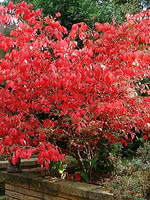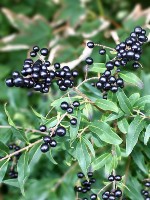Mon-Fri 9am - 5pm Mountain time
Burning Bush vs Wild Privet
Euonymus alatus
Ligustrum vulgare
NOT AVAILABLE THIS SEASON - MIGHT RETURN
Burning Bush is a unique shrub whose leaves turn firey red in the fall. You can plant it in rows to make a hedge or on its own. Burning Bush requires little maintenance and thrives in just about any kind of soil, which makes it a good choice for inexperienced growers. Plant it in full sun to get its best fall color.
Select Cultivar: Dwarf Burning Bush is a smaller variety of Burning Bush. This shrub has a compact form and only reaches 4-5ft tall and 4-5ft wide.
Note: Burning Bush is considered an invasive species in eastern North America. Please plant the right tree in the right place.
Wild Privet is a fast growing ornamental shrub that is well suited for forming hedges and privacy screens. It will retain its leaves in warmer climates but drops them in colder areas. They have small white flowers, though the smell is often considered unpleasant. While the berries are inedible, they are a good food source for many bird species.
It is recommended to prune Wild Privet immediately after flowering, as it can readily self seed. It is deer and rabbit tolerant. It can grow in dry areas, on slopes, and withstand the wind making it well suited for many growing conditions.
Burning Bush Quick Facts
Wild Privet Quick Facts
Toxicity: If ingested, all parts of this plant will cause severe discomfort. Toxic to dogs, cats, and horses

